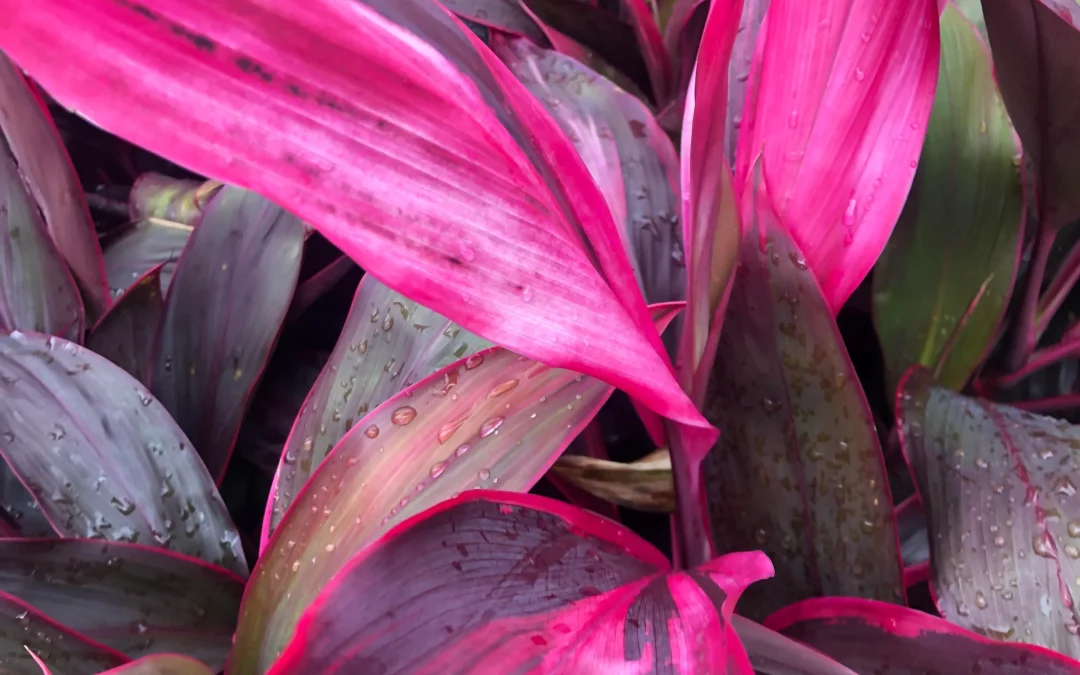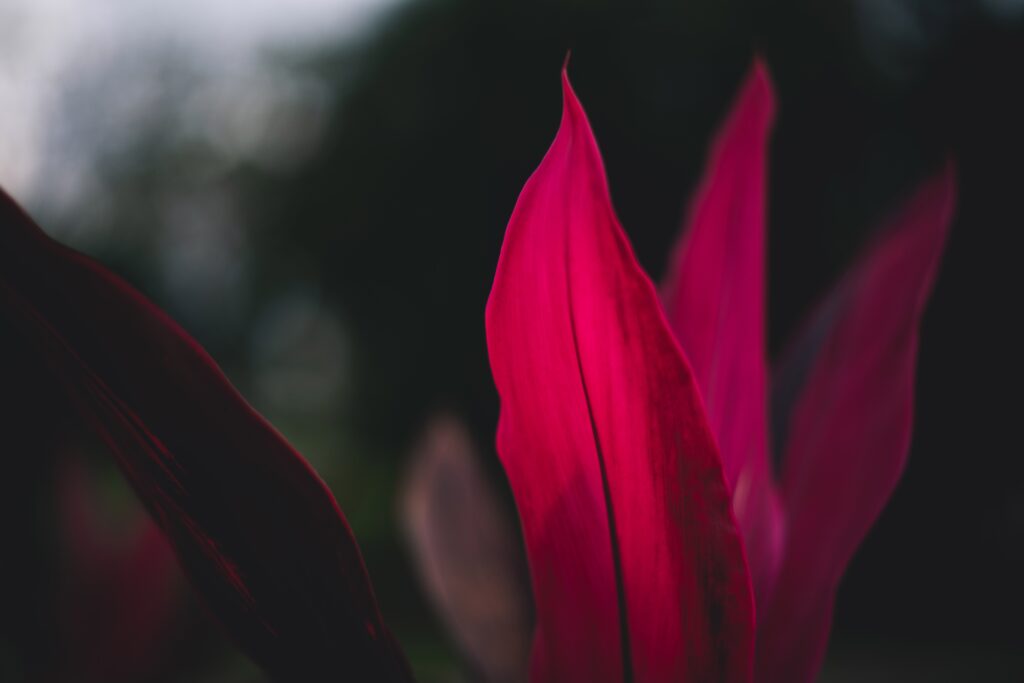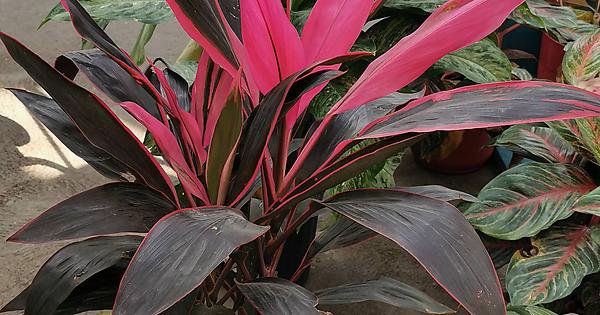The Red Ti Plant (Cordyline fruticosa) is the perfect plant to help add some tropical flavor to your garden or outdoor space. These plants are easy to grow and bring good luck, making them a great gift too!
These plants go by many names, so you may have heard about them before and didn’t know it. Some common pseudo-names for Ti plants are:
- Hawaiian ti plants
- Cabbage plants
- Palm lilies
Ti plants are a very common houseplant thanks to the rich spectrum of red and purple hues in their leaves.
The plant is found throughout tropical Asia and Australia but has a particularly rich culture in Polynesian countries. Native Hawaiians, for example, believed the plant brings good fortune. It is also used as food wrapping.
Whether you’re interested in getting this plant or want to know more about the one you already have, we’ve got you covered!
In this article, we share Red Ti Plant care tips to help keep your plant healthy. Let’s get started.
Do Ti Plants need full sun?
Although the plant is native to countries we think of as hot and sunny; it actually doesn’t do well in direct sunlight.
How much sun your Red Ti plant needs will depend on if you’re growing it indoors or outdoors.
Luckily the Ti is adaptable to interior conditions with low levels of light. However, at low levels, new growth becomes stretched and poor in color, and foliage variegation is reduced.
The Floridata website advises that ti plants grown in containers indoors do best in an area that gets bright, indirect light. As a rule of thumb, you’ll want the plant in well-lighted areas within 4–8 feet of large south-facing, east-facing, or west-facing windows.
A sunny room or covered porch is ideal, but a spot right in a full-sun window is likely to get too hot and cause the leaves to burn.
Growing the plant outside is how you’ll get the deep and best looking reds from your Ti plant.
You’ll want to provide it with 4 hours of direct sunlight or bright, indirect light.
Is a Ti Plant an indoor or outdoor plant?
It’s definitely not uncommon to see Ti plants, especially ones with pretty leaves like the red variety, used in landscape design. They do well underneath tall trees that help filter out the sunlight.
The more common way we see Ti plants grown is as an indoor container plant.
The plants are adaptable enough to survive indoors while still offering lots of color. Plus, they don’t grow too tall or wide, so they’re easy to place in a room.
Do Ti Plants grow fast?
Ti plants aren’t particularly fast growers, and you’ll need around 6 months to get a moderate-size plant.
If you want to start from fresh seeds, you can harvest ripe seeds from berries that replace large blooms that appear on the Ti plant in spring.
You’ll need to wait two to six weeks after planting for them to germinate.
Alternatively, you can also plant whole berries. This will help speed germination by providing nutrition to the seed. Transplant the seedlings into individual pots when the seedlings are several inches tall.
Place the pot in a warm, partial shade location and keep the soil moist by misting it several times per day. Watch for roots to develop, which will take two to four weeks.
From there, the plant will start to grow up and out as an evergreen shrub with single slender stems.
If planted outside, your Red Ti Plant can grow up to 10 feet high and 4 feet wide.
What are Ti Plants used for?
The ease with which it is propagated, its rapid growth, and its colorful leaf variation make it a popular garden and landscape plant. It is used in outdoor landscapes as an accent, hedge, screen, mass planting, and foundation or background planting. Plant it on 2–3-foot centers for massing in the landscape. Small-leafed varieties can be planted closer. Ti can also be planted singly as a specimen plant in a small garden.
In a container or aboveground planter, it is suitable for growing outdoors or indoors, as it requires only ordinary care and tolerates low light intensities. It makes an excellent container plant for a deck or lanai.
Whether grown as an indoor plant or planted outdoors, the ti plant provides tropical beauty to the environment. One plant creates a strong focal point on its own, or you can group several plants together for a dramatic visual effect.
Ti plant is generally grown as a tree-type plant with one main trunk. However, if you prefer a bushier plant with multiple trunks, cut off the top of the plant when the ti plant is young, leaving at least 12 inches of the plant intact. The remaining plant will develop new shoots.
How often do you water a Red Ti Leaf plant?
As is the case with many tropical plants in Florida, it is best to allow the plant to dry out a bit before watering. How quickly the soil dries out will depend on the age of the plant, the temperature of the weather, and how much sunlight the plant gets.
Checking your Ti plant once a week to check if the soil is dry is all you need to do. If the top inch or two of the soil is dry, go ahead and water the plant until water comes out through the drainage holes.
Fertilizing your plant will help it grow faster and keep it in good health. Ti plants can be fertilized with a liquid or slow release fertilizer at about half of the normally recommended strength. The plant food should be applied about once per month during the spring and summer.
You’ll want to avoid using any fertilizer or water that contains fluoride since Ti plants are pretty sensitive to it. If you see a lot brown tips on your plant despite proper watering, it’s likely too much fluoride.
Is the Red Ti Plant poisonous?
In the same way that Flouride is poisonous to the Ti-Plant, the plant itself is poisonous!
Without heavy boiling, eating any part of a Ti plant, especially the berries or roots, can be very dangerous to you or animals.
Typical symptoms include anorexia, depression, hypersalivation, dilated pupils, drooling, and vomiting.
**Do not eat any part of a Red Ti Plant. Every part of the uncooked plant is dangerous to consume.**
Where can I buy a Red Ti Plant?
Take advantage of these Red Ti care tips by raising some plants of your own!
Visit our nursery at Troy Tropics and turn your backyard into an outdoor paradise.
Our team of greenery experts can help you decide on the best plants for your home.
Contact us through our online form or call us directly at (941) 212-1671.








